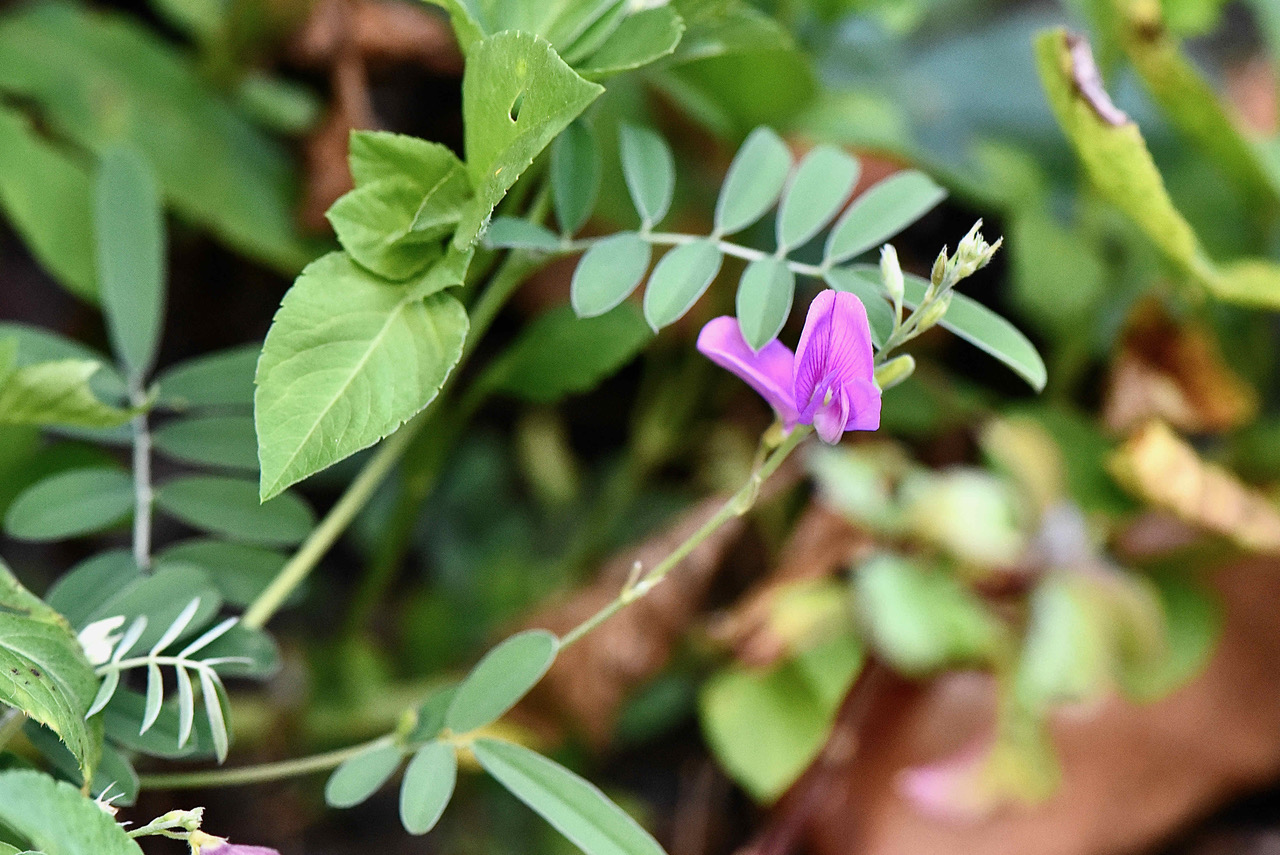
Curtiss's hoarypea, photographed at Atlantic Dunes Park, Delray Beach, Palm Beach County, in April 2022.
Curtiss’s hoarypea, Thephrosia Curtissii isn’t exactly a household name even among South Florida’s wild flower enthusiasts for two very good reasons.
One, it’s small, more sprawling than tall. Its flowers, though pretty enough to catch the eye, aren’t large either.
Two, it’s extremely rare. So rare that the state classifies it as endangered. So rare the Institute for Regional Conservation in Delray Beach and the Florida Natural Area Inventory both consider it critically imperiled, meaning it wouldn’t take much to push it into extinction.
The glint of good news for the species is that there are folk who are pushing back against oblivion. The photos of plants on this page were likely cultivated at Atlantic Dunes Park in Delray Beach.
Curtiss’s hoarypea not only is a Florida native, it’s endemic to Florida, meaning its found nowhere else in the world. It’s mostly found in counties along the Atlantic coast, from Miami-Dade through Martin and in Brevard and Volusia. The Florida Atlas of Vascular Plants also puts it in landlocked Hendry County and Hillsborough County on the Gulf side of the state.
Like peas generally, it has compound leaves, with between 11 and 17 leaflets arranged in pairs with the exception of a single leaf at the apex, or point. The leaves are long and narrow, giving rise to a second common name, narrowleaf hoarypea. The leaflets are between a half inch and an inch-and-a-half.
Thephrosia is derrived from the Greek word meaning ash-colored, while the first part of the common name, hoary means white or gray. Both refer to the grayish tint that trichomes — hairs in plain English — give the leaves of members of this genus.
The flowers of Curtiss’s hoarypea are small, between a quarter inch and a half inch long, but showy, varying in color from white to pink to lavender. They’re shaped like a typical pea blossom, with a banner petal that’s large in comparison with the rest of the flower. Curtiss’s hoarypea flowers spring through fall. When pollinated, they produce a small, segmented seed pod similar to other peas.
The pods are not edible and likely poisonous to both humans and foraging animals. Hoarypeas generally contain a chemical called rotenone, which, if you’ve done any organic gardening, you might have used it as an insecticidal dust. In places, certain members of Thephrosia are used to kill fish. We have no idea how much rotenone Curtiss’s hoarypea might have but it’s not worth finding out the hard way.
Habitats where Curtiss’s hoarypea might be found include pine rocklands, scrubs and sandy places in general.
One more note on the name: Curtiss’s hoarypea is named after Allen Hiram Curtiss, an avid plant collector who is believed to be the first professional botanist to live in Florida. He was an employee of the Florida Agriculture Experiment Station.
Second one more note on the name: The U.S, Department of Agriculture's PLANTS Database recognizes Tephrosia angustissima var. curtissii as the accepted name for Curtiss's Hoarypea. It treats T curtissii as a synonym.
Curtiss’s hoarypea is also known as narrowleaf hoarypea. It is a member of Fabaceae.
Atlantic Dunes Park
